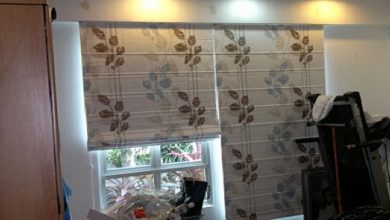Everything you need to know about how to get rid of dust

If you’re allergic to dust, you probably want to know how to get rid of the seemingly endless amounts of dust accumulating in your home. Even if you’re lucky and the dust doesn’t cause an allergic reaction, it’s unsightly and can deteriorate the air quality in your home. In fact, even if you don’t have a dust allergy, the components it contains can affect your lungs and your overall health.
How much dust is in your home depends on many factors, including where you live, the season, how many people live in your home, if there are pets around, and even how you clean. While the dust itself is complicated – even for researchers who devote their time to studying it – getting rid of it is not. Read on to find out where dust comes from, how it impacts your health, and how to keep your home as dust-free as possible.
Where does the dust come from?
The composition of house dust varies greatly from house to house. This is often dirt, skin cells, or fabric fibers, but it can be anything that can dry out and flake off. Books, carpeting, rugs, upholstered furniture, fireplaces, and pets all contribute to the dust load. Dirt, pollen, smoke, exhaust fumes, sand, and more can bring dust from outside. Additionally, molds, bacteria, and dust mites are all likely to inhabit and often grow in the dust.
Although the fight against dust can feel like a never-ending battle, it is worth it. It is essentially a combination of particles from inside and outside, which float in the air and settle on surfaces.
A study conducted found that “the specific dust mix in a household differs depending on the climate, the age of the house and the number of people living there – not to mention the occupants’ cooking, cleaning and dusting habits. smoking” and that “the majority of household dust – about 60% – comes from outside, through windows, doors, air vents and, especially, on the soles of your shoes”.
This tells us that it is not just the presence of dust in our homes that is important, but also the composition of the dust itself. Let’s take a look at some of the common components of dust:
Pollen, soil, and particles
As mentioned above, 60% of household dust comes from outdoors. Pollen, a well-known allergen, can get inside on your shoes, clothes, and even your hair. As you move around your home, you spread the pollen, which then floats through the air and settles on surfaces. So does soil, particles from smoking, and any other outdoor contaminants you can think of.
Dust mites
Dust mites are microscopic pests that naturally appear and thrive in moist environments. Even if your home isn’t unusually hot or humid, dust mites are likely hiding in your bedding, carpets, and curtains. Since dust is made up of things like pet dander and dead skin, which are favorite snacks for dust mites, the more dust, the more dust mites.
Pet Hair and Pet dander
Pet dander – the tiny flecks of skin that animals shed – is another common allergen found in dust. Even if you don’t have a pet, people who come into your home may have pet dander on their clothes. When pet dander gets into the air and settles, it collects dust and mites, which exacerbates the problem.
Food debris
If you’ve ever eaten a meal in front of the living room TV, you know how easy it is to spill a few crumbs. If you sweep up this food debris right away, you won’t have too many problems. However, too often, small food particles are dropped and forgotten, making them a natural component of dust.
Insects and insect droppings
Body parts and feces of insects, especially cockroaches, are frequently found in the dust. If you are allergic to cockroaches, this can make your allergic reactions worse. Cockroaches are not choosy about the homes they infest. So, even if your house is spotless, these pests can enter from their outside environment, the neighbor’s house (especially if you live in an apartment), or be introduced through the plumbing.
lead, arsenic
Most dust components are allergy triggers but do not pose an immediate health risk. However, in the study mentioned above, researchers found that lead, arsenic, and DDT can be present in dust, but in trace amounts.
The same goes for lead, which comes less from wall paint – the source most people expect – than from car exhaust, smelters, and soil deposits.
How to reduce the dust of your home
You could not remove all the dust from your home, but the more you remove, the better you are. As we have seen, the components of dust can cause serious health problems, make your home dirty and pollute the quality of the air you breathe. Here are some tips for getting rid of dust in your home, the right way.
Use a damp cloth to dust
Clean from top to bottom
Change your bedding weekly
Clean and dust your electronic devices
Clean your floor frequently
Use an Hepa air purifier
Bath to your pets weekly
Ventilation the air
How to reduce indoor dust
As mentioned before, dust particles can find their way into your home in many different ways. While stopping dust 100% is likely impossible, there are still things to try that will help at least reduce it. Here are some ideas on how to keep dust away from the bedroom and other rooms in the house.
Ban outdoor shoes – It’s estimated that around half the dust in a house gets carried in on shoes and clothes. Asking guests to strip at the doorstep will get you talked about but there’s absolutely no reason why you can’t ban outdoor shoes from your home. If you’re trying to figure out how to stop dust in the house, make banning outdoor shoes your number one priority. Provide slippers or go barefoot if your flooring allows it.
Place doormats – This is less effective for preventing shoe dirt than taking the shoes off but, it’s still worth trying. Doormats could stop dust from getting into the house from underneath the front door. A mat inside and one outside can provide even better blockage. If your external doors have large gaps and you live in a traffic-rich area, then a draft excluder on the front door can also help. This will keep dust out of the rooms and prevent heat from escaping too.
Reduce or remove carpets – Sure they’re comfortable to step on but all carpeting trap dust and are a breeding ground for bacteria. If you want to stop the dust from spreading through the house, eliminating or at least limiting the number of carpets and rugs is the way to go.
Install an air purifier – Use an air purifier to trap dust particles before they have a chance to settle onto surfaces or into carpets and soft furnishings. Don’t go half-measures on this. Choose a purifier with a high-quality HEPA filter that’s capable of trapping tiny particles and will even kill mould spores. Make sure you change the filter when it’s due, though, or you could end up cycling the air through a system that adds dust rather than taking it away.
Groom pets outdoors – Pet hair traps dirt from outside and when you groom a dog or cat you’ll release both that dirt, dander and tiny hair particles, too. If possible, try grooming your furry friends outdoors.
Declutter frequently – Every surface in your home is a place for the dust to settle. If you have more decorative pieces and limited time to clean them, they’ll just collect dust and make your home look uncared for. Piles of papers or magazines can trap dust too, so try to go through them on a weekly basis. Additionally, accumulated clutter makes cleaning more time-consuming and less efficient.




